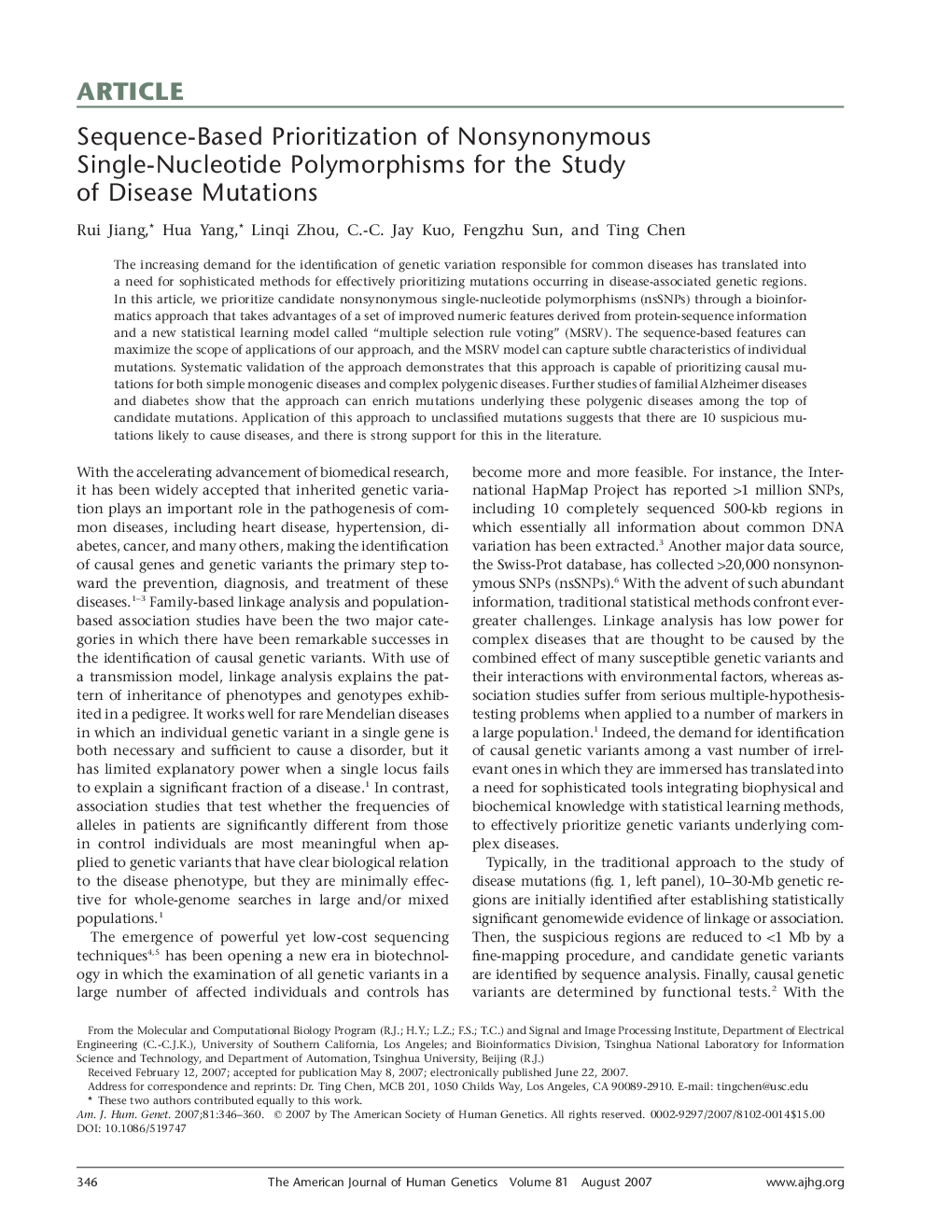| Article ID | Journal | Published Year | Pages | File Type |
|---|---|---|---|---|
| 2811890 | The American Journal of Human Genetics | 2007 | 15 Pages |
The increasing demand for the identification of genetic variation responsible for common diseases has translated into a need for sophisticated methods for effectively prioritizing mutations occurring in disease-associated genetic regions. In this article, we prioritize candidate nonsynonymous single-nucleotide polymorphisms (nsSNPs) through a bioinformatics approach that takes advantages of a set of improved numeric features derived from protein-sequence information and a new statistical learning model called “multiple selection rule voting” (MSRV). The sequence-based features can maximize the scope of applications of our approach, and the MSRV model can capture subtle characteristics of individual mutations. Systematic validation of the approach demonstrates that this approach is capable of prioritizing causal mutations for both simple monogenic diseases and complex polygenic diseases. Further studies of familial Alzheimer diseases and diabetes show that the approach can enrich mutations underlying these polygenic diseases among the top of candidate mutations. Application of this approach to unclassified mutations suggests that there are 10 suspicious mutations likely to cause diseases, and there is strong support for this in the literature.
